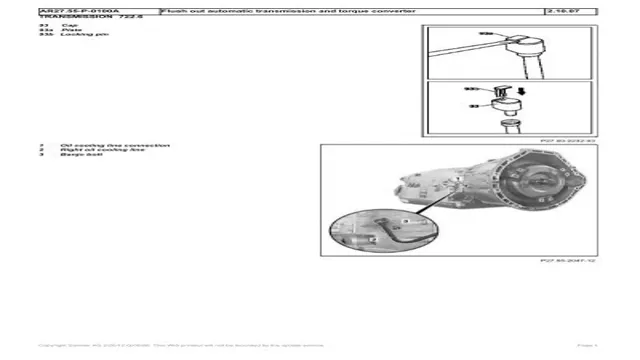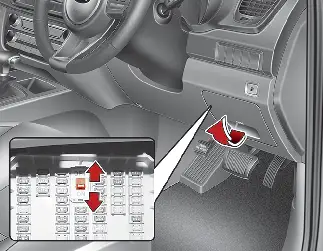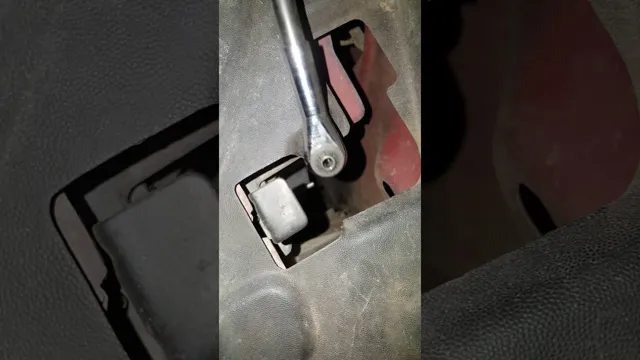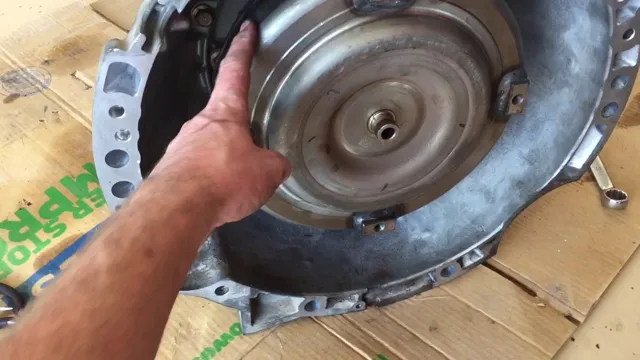Flush Your Torque Converter with these Simple Steps: A Comprehensive Guide!
If you’re experiencing issues with your vehicle’s transmission, flushing your torque converter might be the answer. The torque converter is a critical component that allows for the transfer of energy between the engine and transmission. Over time, debris and contaminants can build up in the torque converter, hindering its ability to function properly.
Flushing the torque converter can help to remove these impurities and improve its performance. But how exactly does one go about flushing a torque converter? In this guide, we’ll walk you through the process step-by-step, explaining the benefits of flushing and providing some tips for doing it effectively. By the end, you’ll have a clear understanding of what’s involved and be better equipped to maintain your vehicle’s transmission for years to come.
Understanding Torque Converter Fluid
If you’re wondering how to flush torque converter fluid, it’s essential to understand what the torque converter is and how it works. The torque converter is responsible for transmitting engine power to the transmission. It uses hydraulic fluid to transfer power from the engine to the transmission without any direct contact.
Over time, the fluid can become contaminated with debris, metal shavings, and other particles. If left unchecked, this can cause damage to the torque converter and other components. Flushing the torque converter fluid removes any contaminants and ensures that the system operates smoothly.
It’s recommended to flush your torque converter every 30,000-60,000 miles, depending on your driving conditions. By doing so, you’ll help extend the lifespan of your vehicle and keep it running smoothly. So, if you notice any signs of a failing torque converter, such as slipping or delayed shifting, it might be time to consider a torque converter fluid flush.
What is a torque converter fluid?
Torque converter fluid plays a crucial role in the functioning of an automatic transmission system. This fluid is specially designed to operate the torque converter, which is responsible for transmitting power from the engine to the gearbox. Understanding torque converter fluid is imperative, as it enhances the longevity and performance of your transmission.
The fluid prevents overheating, reduces wear and tear of components, and lubricates moving parts to reduce friction. Additionally, torque converter fluid contains certain additives that aid in cleaning and preventing corrosion. In essence, the fluid acts as the lifeblood of the transmission system, ensuring its optimal performance.
Therefore, it’s essential to choose the correct type of torque converter fluid based on your vehicle’s specifications to safeguard against transmission damages and prolong its lifespan.
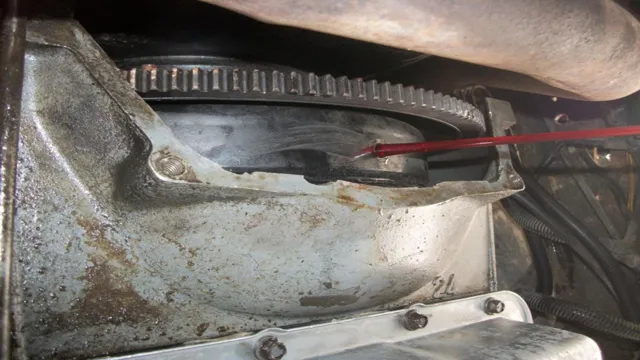
When does it need to be flushed?
Torque Converter Fluid When it comes to your vehicle’s transmission, the torque converter is a crucial component that allows your vehicle to shift gears smoothly and efficiently. And just like any other component of your car, the torque converter requires regular maintenance and care to ensure optimal performance. One key element of maintaining your torque converter is making sure that the torque converter fluid is flushed periodically.
Over time, the fluid in your torque converter can become contaminated with debris and wear particles that can cause damage to your transmission. Flushing the torque converter fluid at regular intervals can prevent this build-up and ensure that your torque converter is functioning at its best. But when does your torque converter fluid need to be flushed? The answer depends on several factors, such as your vehicle’s make and model, your driving habits, and the condition of the existing fluid.
However, a general rule of thumb is to have your torque converter fluid flushed every 30,000 to 60,000 miles. This interval may vary based on your car’s manufacturer recommendations and your driving conditions. Regular maintenance and care of your vehicle, including torque converter fluid flushing, can prolong the life of your transmission and keep your car running smoothly for years to come.
Step-by-Step Guide to Flushing Your Torque Converter
Flushing your torque converter is a crucial part of maintaining your vehicle’s performance. This process involves removing the old transmission fluid and replacing it with new, clean fluid. If you’re unfamiliar with the procedure, it may seem daunting at first.
But don’t worry, it’s not as difficult as it may sound! Here’s a step-by-step guide on how to flush your torque converter: First, locate the torque converter and the transmission fluid drain plug. Remove the plug and drain the old fluid into a pan. Next, replace the plug and refill the transmission with new fluid.
Start the engine and let it idle for a few minutes. Then, shift through each gear, pausing for a few seconds in each one to allow the fluid to circulate. Finally, check the fluid level and add more if necessary.
Remember, the frequency of flushing will depend on your vehicle’s manufacturer recommendations, so consult your owner’s manual for the proper schedule. By following these steps, you can keep your torque converter in top-notch condition and extend the life of your vehicle.
Step 1: Gather the necessary materials
If you want to keep your car running smoothly, it’s essential to maintain the torque converter. Flushing your torque converter should be a part of your regular maintenance routine. Before you get started, you’ll need to gather a few materials.
First, you’ll need a clean drain pan to collect the old fluid. You’ll also need a new filter kit and the recommended amount of new transmission fluid for your vehicle. A torque converter flush is a straightforward procedure, but it’s essential to make sure you have all the necessary materials beforehand.
Trust me, it’s better to be prepared than to realize halfway through that you’re missing something!
Step 2: Drain the old fluid
After you have prepared your vehicle for a torque converter flush, it’s time to move on to the next step; draining the old fluid. This is a crucial step that helps to get rid of all the contaminated fluid that may have been contaminated with debris and metal shavings. The process involves locating the drain plug on the torque converter, which is usually located on the bottom of the converter.
Use a wrench to loosen the plug, and then carefully open it to let the old fluid drain out. Ensure that you have a catch pan underneath to avoid a mess. Keep in mind that the draining process could take some time, so be patient.
Once all the old fluid has drained out, replace the drain plug and move on to the next step. Remember, throughout the process, handle all the torque converter parts with extreme care to avoid damaging them.
Step 3: Add new fluid and cleaner
When it comes to flushing your torque converter, the next step is to add new fluid and cleaner. This is a critical part of the process since it ensures that any remaining debris and contaminants are removed, leaving your torque converter clean and functioning optimally. Before adding any new fluid, however, it’s important to make sure that the old fluid has been completely drained from the converter.
Once you’re sure that the old fluid has been effectively removed, you can add the new fluid and cleaner as per the manufacturer’s recommendations. The type of fluid and cleaner will vary depending on your torque converter and the vehicle you’re using it in, so it’s essential to consult with the manufacturer or a professional mechanic to ensure that you’re using the correct products. With the right fluid and cleaner in place, your torque converter will be able to operate smoothly and efficiently for years to come, avoiding costly repairs and replacements down the line.
Step 4: Run the engine and let the fluid circulate
When it comes to flushing your torque converter, Step 4 is crucial to ensuring your vehicle runs smoothly. After you’ve replaced the transmission fluid, it’s time to start the engine and let the fluid circulate through the system. Allow the engine to reach operating temperature, and then shift through all the gears to ensure the new fluid is distributed throughout the transmission and torque converter.
This step allows any remaining debris to be flushed out of the system, preventing future problems. A smoothly operating torque converter is necessary to provide power to your vehicle, making it crucial to take this step seriously. By ensuring the fluid is circulating properly through your system, you can be confident that your vehicle will operate smoothly for years to come.
Don’t overlook the importance of this step in the torque converter flushing process!
Step 5: Drain the new fluid
After the old fluid has been drained and the torque converter has been refilled with new fluid, it’s time to drain the new fluid. This is an important step to remove any remaining contaminants that may have been brought in during the flushing process. To do this, you’ll need to locate the drain plug on the converter itself.
This will vary depending on the make and model of your vehicle, so consult your owner’s manual or do some research to find the location. Once you’ve found it, place a container or pan underneath to catch the fluid as it drains out. Then, simply remove the plug and allow the fluid to drain completely.
It’s important to be patient during this process, as it can take several minutes for all of the fluid to drain out. Once it has, replace the drain plug and dispose of the old fluid properly. With the new fluid now clean and ready to go, your torque converter should be operating smoothly and efficiently.
Step 6: Refill with new fluid and check levels
Now that the old fluid has been completely drained from your torque converter, it’s time to refill it with fresh, clean transmission fluid. Make sure the fluid you use is recommended by your vehicle’s manufacturer and that it meets the required standards. Slowly add the new fluid through the transmission dipstick tube, checking the levels with a dipstick as you go along.
It’s important not to overfill the transmission, as this can cause damage. Keep adding fluid until it reaches the “full” or “max” mark on the dipstick. Once the fluid levels are optimal, start the engine and let it idle for a few minutes, then shift the transmission into each gear, allowing a few seconds for the fluid to circulate through the system.
Double-check the fluid level again and add more if necessary. Congratulations, you’ve successfully flushed your torque converter and extended the life of your transmission while improving its performance.
The Benefits of Flushing Your Torque Converter
If you’re wondering how to flush torque converter, then you should know the benefits of doing it. Flushing your torque converter can improve the performance and longevity of your vehicle. It removes any debris, sludge, or metal shavings that might be circulating inside it, which can cause damage to the transmission.
This is especially important if you’ve had transmission work done recently, as leftover debris can cause damage to the new parts. Flushing also helps to maintain the fluid’s quality and prevents overheating, which can lead to transmission failure. However, it’s important to note that not all vehicles require regular torque converter flushes, so it’s best to consult with a professional to see if it’s necessary for your vehicle.
In any case, regular maintenance is crucial to keep your vehicle running smoothly and avoid costly repairs in the long run.
Improved performance and fuel efficiency
If you want to improve the performance of your vehicle as well as its fuel efficiency, then it’s essential to give the torque converter a regular flush. A torque converter is a device that allows the engine to operate independently of the transmission by transmitting power from the engine to the transmission. Over time, dirt, debris, and other contaminants can build up in the torque converter, causing it to work less efficiently, which can affect the performance of your car and lead to a decrease in fuel efficiency.
By flushing the torque converter, you can remove these contaminants and improve its overall performance, ensuring that your vehicle runs smoothly and efficiently. Not only will this help you save money on gas, but it will also keep your car running at its best for longer, reducing the need for costly and time-consuming repairs. Take care of your torque converter, and it will take care of you!
Extended lifespan of your torque converter
Torque Converter Flushing If you are wondering how to extend the lifespan of your torque converter, flushing it regularly is the answer. Flushing your torque converter is a simple maintenance task that involves removing the old fluid and replacing it with fresh fluid. This process is crucial because old fluid can build up debris and contaminants that can damage the torque converter and decrease its performance.
By flushing your torque converter, you can ensure that it operates smoothly and efficiently for a longer period. This not only saves you money on costly repairs but also improves the overall driving experience. Think of it like changing the oil in your car.
Just as fresh oil helps keep your engine running smoothly and efficiently, fresh fluid in your torque converter can prolong its life and performance. Flushing your torque converter is a quick and easy process that can be done during routine maintenance. So, if you want to prevent the need for costly repairs down the line and keep your car running smoothly, make sure to flush your torque converter regularly.
Conclusion
In summary, flushing your torque converter is like giving it a refreshing spa treatment. Just like how we need to clean and rejuvenate our bodies, our vehicles need the same care and attention. Flushing your torque converter can help improve performance, extend its lifespan, and ultimately keep you and your car on the road for longer.
So, don’t shy away from this maintenance task – your torque converter (and wallet) will thank you in the long run!”
FAQs
What is a torque converter?
A torque converter is a fluid coupling that allows gear shifts to occur in an automatic transmission.
What happens when a torque converter is not flushed?
When a torque converter is not flushed, it can lead to a build-up of debris and metal shavings, which can damage the transmission.
How often should a torque converter be flushed?
Most manufacturers recommend flushing the torque converter every 60,000 to 100,000 miles.
Can I flush the torque converter myself?
It is recommended to have a professional flush the torque converter, as it requires specialized equipment and knowledge. However, some DIY methods may be available.

